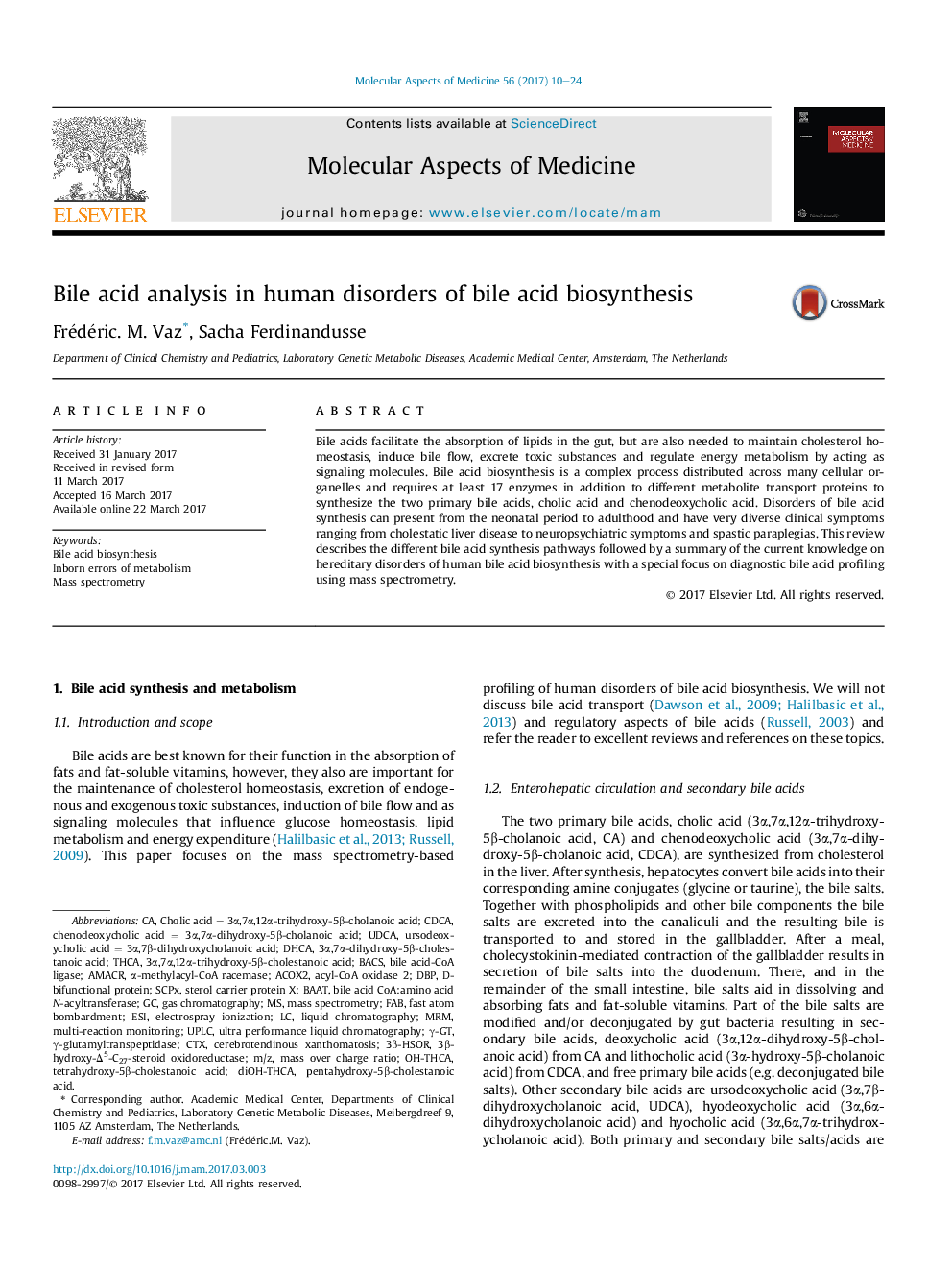| Article ID | Journal | Published Year | Pages | File Type |
|---|---|---|---|---|
| 5513810 | Molecular Aspects of Medicine | 2017 | 15 Pages |
Bile acids facilitate the absorption of lipids in the gut, but are also needed to maintain cholesterol homeostasis, induce bile flow, excrete toxic substances and regulate energy metabolism by acting as signaling molecules. Bile acid biosynthesis is a complex process distributed across many cellular organelles and requires at least 17 enzymes in addition to different metabolite transport proteins to synthesize the two primary bile acids, cholic acid and chenodeoxycholic acid. Disorders of bile acid synthesis can present from the neonatal period to adulthood and have very diverse clinical symptoms ranging from cholestatic liver disease to neuropsychiatric symptoms and spastic paraplegias. This review describes the different bile acid synthesis pathways followed by a summary of the current knowledge on hereditary disorders of human bile acid biosynthesis with a special focus on diagnostic bile acid profiling using mass spectrometry.
